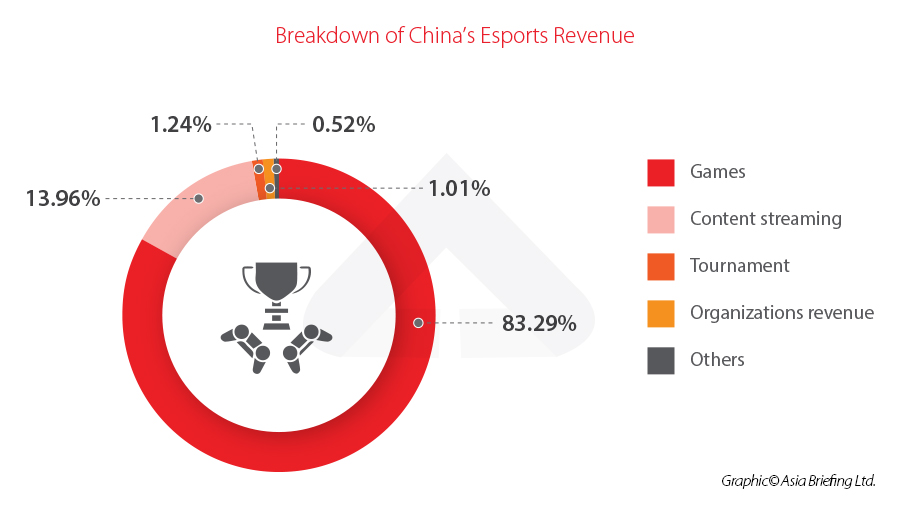China Esports Revolution: A $4 Billion Surge in 2023 Unveiled
In the dynamic landscape of esports, China emerges as a powerhouse, achieving a staggering revenue of $3.71 billion USD (26.3 billion yuan) in 2023. This financial triumph is not merely a statistic but the result of a meticulously crafted journey intertwining historical catalysts, policy shifts, and technological leaps. This comprehensive overview explores the multifaceted aspects of China esports industry, revealing a nation on the brink of global dominance.
The Genesis - from niche hobby to National pride
The roots of China esports dominance trace back to 2003 when the government officially recognized esports as a sport. This pivotal moment marked the beginning of a transformation, elevating esports from a niche hobby to a source of national pride. The government's endorsement set the stage for a cultural shift, transforming esports into a major cultural event that captured the imagination of millions.
 The last years have seen a strong and steady growth in jobs related to esports (credits: IJesports.org)
The last years have seen a strong and steady growth in jobs related to esports (credits: IJesports.org)Policy dynamics: Shaping the esports landscape
A significant turning point occurred in 2018 with the issuance of the No. 93 document by the State Council of China, solidifying esports as a form of sports consumption. Complemented by 98 normative documents by the end of 2019, this comprehensive policy framework shaped national esports teams and fostered an environment conducive to industry growth. The government's involvement at both central and local levels played a pivotal role in the strategic development of the esports ecosystem.
Technological leap: Riding the 5G wave
As esports matured, so did the technological infrastructure, with the adoption of 5G technology playing a central role. China's massive capital expenditure of 1.5 trillion yuan from 2019 to 2025 in 5G laid the groundwork for a new era in esports. This investment not only ensured connectivity but also paved the way for innovations like three-dimensional digital environments, virtual reality, and augmented reality, enhancing the overall gaming experience.
Revenue composition: Unraveling the Digital ecosystem
Delving into the revenue composition reveals a nuanced structure. In 2023, 80.87% of the revenue emanates from live content streaming, showcasing the industry's symbiotic relationship with digital platforms. Events and club revenues contribute 8.59% and 6.42%, respectively, highlighting a diversified ecosystem where live streaming, events, and club engagements collectively contribute to financial success. A closer look at the revenue structure in 2019 shows a dominance of 77.42% from esports information services, emphasizing the industry's reliance on information dissemination as a linchpin for the fan-based economy.
 Market size of China Esports continue to grow with no signs of stopping (credits: iResearch)
Market size of China Esports continue to grow with no signs of stopping (credits: iResearch)Categories and expansion: Mapping the esports landscape
In the dynamic world of esports, gaming categories reveal intriguing patterns. Shooting games reign supreme with a considerable 28%, closely followed by multiplayer online tactical games at 15.9% and sports-based competitive games at 12.2%. This diversified interest mirrors the evolving tastes of the expansive gaming community. The year 2023 witnessed a steady growth in non-exhibition events, totaling 127, featuring both professional and non-professional players. Shanghai, Beijing, and Hangzhou emerged as hotspots for hosting offline esports events, further solidifying China's esports position as a global phenomenom.
Asian Games triumph - Esports as the 100m sprint of the event
The validation of esports as a cultural force reached new heights at the Asian Games in 2023. Esports emerged as a medal-winning sport, captivating audiences from over twenty countries in seven esports games. The sheer demand for esports tickets led to a unique lottery system, making it the only sport in the Games to receive such treatment. With over 5 million entrants vying for a ticket, esports became the 100m sprint of the Asian Games, epitomizing its colossal popularity.
 While the majority of the revenue from China Esports comes from the games themselves, the Tier 1 tournaments are propelling its fame across the globe (credits: China Briefing)
While the majority of the revenue from China Esports comes from the games themselves, the Tier 1 tournaments are propelling its fame across the globe (credits: China Briefing)Government's dichotomy: Praising pride while navigating concerns
Despite the exuberant success, the Chinese government remains on the fence regarding esports. While acknowledging the national pride associated with esports, there are lingering concerns about the potential for internet addiction among the nation's youth. This nuanced stance reflects the delicate balance between celebrating cultural achievements and safeguarding societal well-being.
In conclusion, China esports triumph in 2023, reaching nearly $4 billion in revenue, is the culmination of strategic movements spanning two decades. From policy support to technological advancements, China undoubtedly nurtured an industry that has now become a global phenomenon. As the spotlight intensifies on China esports prowess, the industry's historical journey serves as a blueprint for nations aspiring to navigate the intersection of culture, policy, and technology in the dynamic world of esports.
Feature image credits: MarketingToChina
Read also:
E-sports are more popular than traditional sports in Asia
Jason Lake, Complexity's CEO Aims to Reclaim His Brainchild
League of Legends will ‘change forever’ in 2025 - new Riot director writes
Launders to host first CS2 LAN in Toronto: How to Participate
